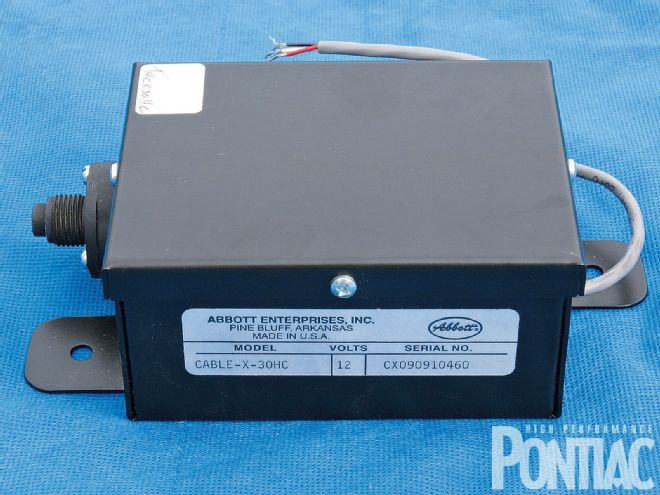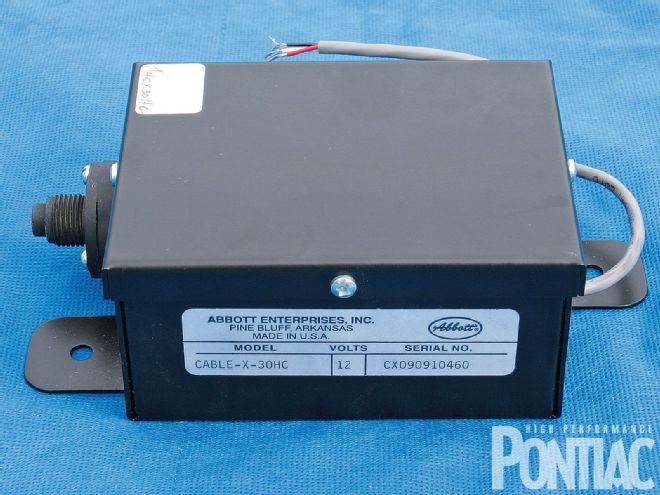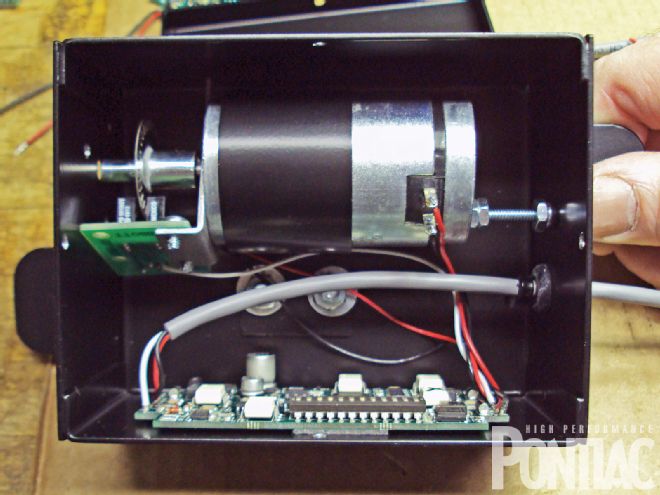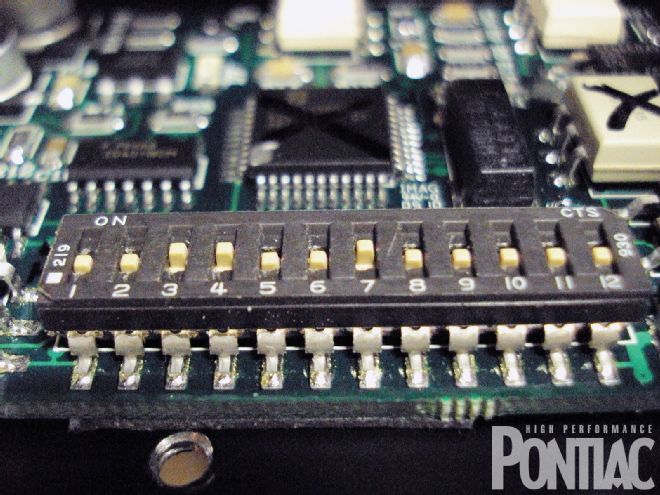
Modifying an older Pontiac is often like painting a house. The large surface areas go very quickly, and then you get mired in the trim and wood work. When swapping or upgrading components, they often bolt into the Pontiac quite easily; then you end up spending weeks trying to connect something as simple as the power-steering bracket. Anyone who has worked on cars knows it's only a matter of when the modification will hit a brick wall, not if it will.
 The Cable X is American-made and designed to live in the harsh environment of a heavy-duty truck. The unit is considered weather-proof but not waterproof, so it needs to be mounted either under the hood or in the passenger compartment.
The Cable X is American-made and designed to live in the harsh environment of a heavy-duty truck. The unit is considered weather-proof but not waterproof, so it needs to be mounted either under the hood or in the passenger compartment.
One area of the Pontiac drivetrain that has advanced dramatically from yesteryear is the automatic transmission. The advent of four-speed overdrive units with advanced electronic controls and lock-up torque converters has been a bonanza for the Pontiac hobbyist who desires a newer gearbox. The extra gear with a ratio of less than 1:1 means that stunning dragstrip performance with stout gears no longer equates to poor fuel economy, and increased engine noise and rate of wear when driving on the highway. Our subject SD-455 T/A has illustrated the miraculous transformation the SuperMatic transmission can make in a 36-year-old Firebird.
When it comes to installing almost any electronic transmission in an older Pontiac, two obstacles need to be hurdled beyond the physical attachment to the engine and chassis: controlling the shift strategy and getting the speedometer to work. The GMPP controller we used in our installation makes easy work of operating the transmission, but still leaves you without a speedometer.
 The speed of the internal motor is controlled by the modified signal that is received by the decoder from the speed sensor in the GM transmission. It then turns the speedometer cable.
The speed of the internal motor is controlled by the modified signal that is received by the decoder from the speed sensor in the GM transmission. It then turns the speedometer cable.
A traditional Pontiac has a mechanical, cable-driven speedometer, while the new gearboxes employ a vehicle-speed sensor instead. The electronic sensor sends a signal to the dashboard of a newer Pontiac, and a small electric motor in the instrument cluster speedometer head operates the needle, and if need be, the odometer. For older Pontiacs, the vehicle speed sensor can be a major obstacle if you want to know how fast you are going.
There are two different approaches to address this: Change the tailshaft housing, as we did, to get the stock speedometer to function, or contact Abbott Enterprises, for its innovative Cable X system.
This unit is a small electronic device with only three wires to connect: 12V, ground, and signal output from the new transmission. The Cable X box comes equipped with a 36-inch-long speedometer cable, so the box needs to be mounted within that distance from the instrument cluster.
 The calibration or setup procedure for accurate readings is done through the setting of the internal dip switches.
The calibration or setup procedure for accurate readings is done through the setting of the internal dip switches.
The Cable X takes the sine-wave output signal from the electronic transmission. Through a circuit board, called a decoder, it analyzes it and then uses the calculated data to turn a small electric motor (internal to the box) that spins the speedometer cable. Thus, your stock speedometer works properly and has no idea that the cable is being spun by an electric motor instead of the transmission.
What is especially interesting about the Cable X system is that it is easily programmed for very accurate results. There is a series of dip switches on the decoder board, and after a few simple calculations, such as the tire diameter and rear-end gearing, you set the internal calibration. Once that is done, both the odometer and speedometer will read accurately, regardless of other modifications you make to the drivetrain. The Cable X comes with very easy to understand instructions, and there is no fear that you need an electronic engineering degree to make it work.
The Cable X system was originally designed to operate a tachograph in a semitruck that recorded the driver's road speed. In that application, the mechanical tachograph is much more strenuous to run than a Pontiac speedometer. Cable X was designed to last at least 250,000 miles in a truck application. In a Pontiac, it is predicted to last upwards of 500,000 miles or longer, so there is no concern for it wearing out before your car does.